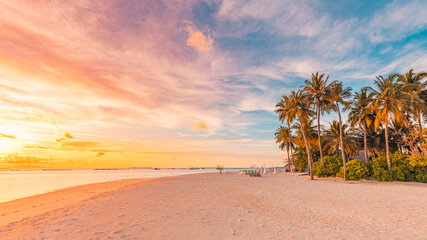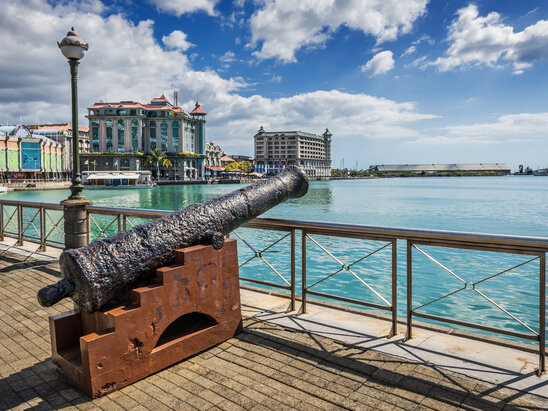Know the month you would like to travel? Then our charter experts can give you some incredible options on destinations and the right yachts to take you there.Edmiston creates a bespoke itinerary to meet your needs.
Sprinkled across the Indian Ocean and inching towards The Seychelles, Mauritius and its many smaller isles are part of the Mascarene Islands, which also includes the islands of Réunion and Rodrigues, and is sometimes described as the ‘pearl of the Indian Ocean’.
For many guests on a Mauritius yacht charter, what appeals today is that the island nation is a safe and harmonious place to visit, with a cultural richness with a mix of Asian, European and African heritage that can be seen in its temples, colourful markets and colonial mansions and felt in its infectious séga rhythms.
This melting pot of different cultures is most evident in the capital of Port Louis, where most Mauritius yacht charters depart from, and a visit to the Port Louis market is a great introduction to the different flavours and aromas to be found on the island and its neighbours.


Mauritius food is varied and enticing with a real fusion of cuisines – one of the best places to sample lots of different dishes is the Port Louis market. Alternatively, your onboard chef can prepare you any number of delicacies, using delicious local ingredients, from Indian curries, to Chinese dumplings and octopus stew.
Grand Baie on the north of the island, is the main party spot after dark and places like the craft cocktail bar of Avant Garde have a stripped back feel.
For something a little more upmarket, you should head to one of the island’s many luxury resorts. At the secluded resort of One&Only Le Saint Géran, you can take in the ocean panoramas as you feast on sushi and sashimi.


With three volcanic mountain ranges to choose from, on a Mauritius yacht charter you can easily escape the crowds and go on an eco-adventure. Take a daytrip to Chamarel Waterfall, a single-drop waterfall, which is Mauritius’s highest, and also witness the unique geological topography of Chamarel’s Seven Coloured Earth.
Climb Le Morne Brabant, to see the famous underwater waterfall and for a reminder of why freedom is so important for all.
For further thrills, take a skydive over Cap Malheureux, take a ride along the Indian Ocean’s largest zip line, or swim with dolphins in Tamarin Bay. If you are here between May and early December a day at the races at the 19th-century Champ de Mars horse-racing course is a must.
The oldest botanical garden in the southern hemisphere, this 60-acre site, which dates back to 1729 is packed with around 500 species of both local and imported flora, including the grapefruit-like pamplemousse, brought here by 16th-century Dutch explorers.
The garden can be combined with a visit to the Beau Plan sugar mill, which gives insight into the history of sugar production and slavery on the island. The Château de Labourdonnais gives a taste of how the colonial sugar plantation owners lived by comparison.


On the edge of the untamed and beautiful Black River Gorges National Park and nestled alongside pineapple and sugar cane plantations, is the cheery and welcoming mountain village of Chamarel. It is well-known for its culinary scene and coffee and there is a great selection of restaurants.
For something to wash your meal down, visit the working rum distillery and museum, La Rhumerie de Chamarel. The village’s best-known attraction, the Seven Coloured Earths is an area of different coloured sands. Visitors sometimes find it a little underwhelming but the Chamarel Waterfall, which drops almost 100m over the cliffs, rarely disappoints.


Also known as Ile Plate, this small, uninhabited, flat island lies around 11km off the northern coast at Cap Malheureux. With no facilities, it’s an idyllic isle lapped by clear and shallow waters, perfect for sunbathing and snorkelling. The Pigeon Rock area harbours a famous dive site called The Shark Pit, where divers can witness sharks swirling within the pit for the rich oxygen.
Flat Island is a low lying island situated off the North coast of Mauritius, and in danger of possible submersion due to the historic rise in the sea-level due to global warming. The island is also home to an abandoned army base and one of Mauritius's few lighthouses still in operation which is accessible by a foot trail.


Referred to as the Mauritian Cote d’Azur, this is by far the most developed resort area. The town of Grand Baie is arranged around a glorious (though busy) curve of fine golden sand, which offers good anchorage and a friendly yacht club. The colourful Tamil temple of Shiv Kalyan Vath Mandir, older than Surya Oudaya Sangam, warrants a visit.
One of Mauritius’s best drift-dive sites, Whale Rock, has submerged caves to explore the abundance of marine life such as angel fish, trigger fish and clown fish. If you're lucky you might even spot a swordfish or hammerhead. At the end of the day, head back to the bone-white beaches and thatched cocktail hangouts to watch the sun disappear over the horizon.


Mauritius’s most iconic image – Le Morne Brabant is not only a striking bulk of a rock jutting into the sea but it has huge local and cultural significance. Rising 556m above sea level, it was one of the island’s hiding places for runaway slaves and legend has it that in 1835 as police arrived at the rock, a group of slaves jumped from the summit to their deaths rather than be recaptured. The police were apparently there to announce that slavery had been abolished.
Le Morne Mountain has long represented a symbol of freedom, and in 2008 was inscribed onto the UNESCO World Heritage List where it's been welcoming thousands of local and foreign visitors ever since. Surrounded by the magnificent Mauritian lagoon, the steep sloped summit overhangs creating many caves beneath, which look out to the Indian Ocean and once sheltered escaped slaves.


The port capital’s muddle of old and new buildings – from 18-century colonial mansions to modern corporate towers - and tangle of streets give a sense of the island’s rich and cosmopolitan history. To get a feel of modern-day Mauritian life, visit on a weekday morning when the colourful and noisy open-air market is on.
At the former immigration depot of Aapravisi Ghat, built in 1849, visitors can tour the buildings where indentured labourers were processed when they arrived to replace the slaves who had worked the sugar plantations.


The bustling coastal resort of Tamarin, backed by the imposing 777m bulk of the Rampart Mountain, is named after the Tamarind trees planted by the early Dutch settlers. Today, visitors come to enjoy the area’s sandy beaches and water sports or to take a dolphin trip. One of the most rewarding excursions here is to explore the twists and turns of the Rampart River mouth by kayak.
This small fishing village exudes an incomparable energy and harmony, with waves and an incredible sunset that seduces visitors. The area's bohemian aura, is a hotspot for surfers due to the superb waves in the bay, with advanced surfers preferring to tackle the fearsome reef waves nearby. Be careful though as the currents are strong and have swept away many careless swimmers.


Mauritius is mild year-round, with an average temperature of 25°C. The main charter season is from May to December, which avoids the cyclone season in January and February, though the cyclones rarely hit here.
What’s the currency of Mauritius?
The currency of Mauritius is the Mauritian Rupee, though the US Dollar is also widely accepted.
Language spoken in Mauritius?
Mauritian Creole is the main language of Mauritius but both French and English are widely spoken here, too.
Time zone in Mauritius?
Mauritius follows Mauritius Standard Time, which is GMT +4. There is no Daylight-Saving Time.
Know the month you would like to travel? Then our charter experts can give you some incredible options on destinations and the right yachts to take you there.Edmiston creates a bespoke itinerary to meet your needs.
